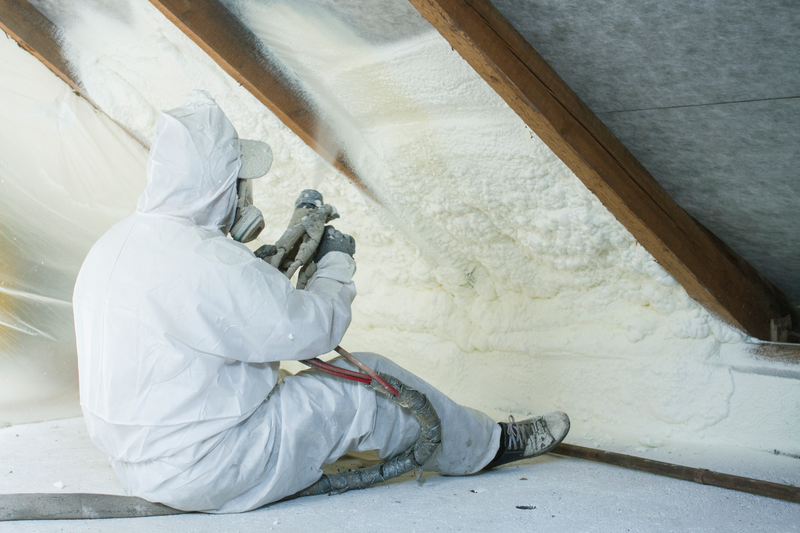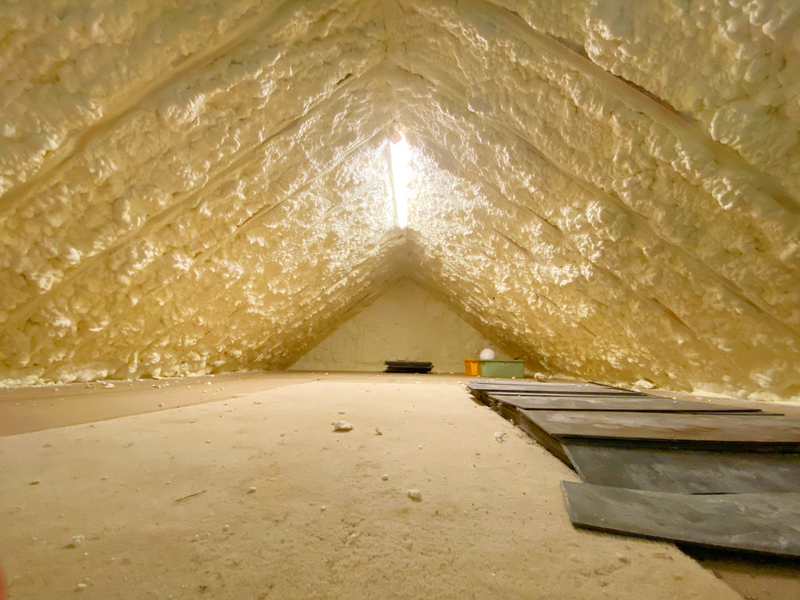- AppliancesElectriciansHVACLandscapingLocksmithPest ControlPlumbingRenovationRoofingT V RepairAll Home Improvement
- Car AccidentClass ActionCorporate LawCriminal DefenseDivorce LawEmployment LawFamily LawFinancial LawLegal AidMedical Injury LawyersMedical MalpracticeReal Estate LawWater Fire RestorationAll Legal
- InvestmentRetirementAll Finance
- Animal InsuranceAutoGeneral InsuranceHealth PolicyHome RentersAll Insurance
- DentalHealth SpecialistsAll Medical
- Animal CareVeterinaryAll Pets
- Auto GlassTowingAll Automotive
What Is Spray Foam Insulation?

If you’re weighing your options when it comes to sealing leaks in your home, preventing drafts around windows, and enjoying optimal temperature control, you may be wondering about spray foam insulation.
This popular alternative to fiberglass insulation can help you keep your home warm in the winter and cool in the summer. It may help you reduce your energy costs because infiltration accounts for a lot of lost energy in the home.
Spray foam insulation is also known as spray polyurethane foam. It is made with liquid polyurethane that expands when it meets the air. This allows it to fit areas such as interior stud walls, attic spaces and around corners. The foam swells and expands to fill in tiny gaps and form an air sealing barrier, which results in fewer air leaks.
What Is Spray Foam Made Out Of?
Spray foam insulation is made from liquid polyurethane.
How Is Spray Foam Installed?
Professional spray foam installers use spray guns for fast and efficient application.
How Is Spray Foam Different From Fiberglass Insulation?
There are marked differences between fiberglass and foam insulation. Fiberglass insulation comes in sheets and works by trapping air inside its glass fibers and slowing down the transfer of heat. Spray foam creates air, moisture and vapor barriers. Fiberglass is much cheaper than spray insulation, but it requires professional installation. Fiberglass insulation can be installed by folks with average DIY skills. Fiberglass installation stays dry for 10 to 25 years, but spray foam insulation has an expected average lifespan of 80 years or more.
Spray foam insulation can make your home more comfortable and more energy efficient. It can also act as a vapor barrier to prevent water intrusion and condensation, both of which can lead to expensive repairs.
Elocal Editorial Content is for educational and entertainment purposes only. Editorial Content should not be used as a substitute for advice from a licensed professional in your state reviewing your issue. Systems, equipment, issues and circumstances vary. Follow the manufacturer's safety precautions. The opinions, beliefs and viewpoints expressed by the eLocal Editorial Team and other third-party content providers do not necessarily reflect the opinions, beliefs and viewpoints of eLocal or its affiliate companies. Use of the Blog is subject to the
Website Terms and Conditions.The eLocal Editorial Team operates independently of eLocal USA's marketing and sales decisions.




